Biography
Biography of Phraya Srisundaravohara (Noi Achâryânkura)
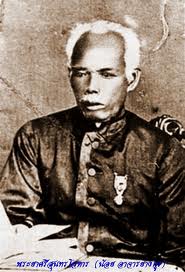
Childhood & Teenage
Phraya Srisundaravohara, or Noi, was born in Chachoengsao as a commoner on 5th July 1822, in the reign of King Rama II. When he was around 7 years old, Noi first received basic Thai education from his eldest brother who was ordained as a Buddhist monk at Sothon Wararam Worawihan Temple at that time. Once turned 13 in 1835, he came to Saket Temple in Bangkok and was ordained as a novice Buddhist monk for 8 years. During that time, he had a chance to learn and master Thai, Khmer, Magadha, and Pali as well as Buddhist principles from various sources. In 1843, at the age of 21, he fully became a Buddhist monk and completed Buddhist Theology Examination – Level 5. With such accomplishment, he was given a status of Buddhist Philosopher of Saket Temple. When King Rama III heard of this news, he was so delighted that he granted a major renovation to Saket Temple and ordered a construction of the new pagoda called Golden Mount as a celebration.
Adulthood
Noi continued to further study Buddhism with King Rama IV (when he was ordained as Buddhist monk and had not taken the throne) and completed Buddhist Theology Examination – Level 7. Once ascended to the throne, King Rama IV appointed him as a Royal Buddhist Vicar. Respectively, he was frequently invited to preach to noblemen and merchants, as well as to teach Thai, Khmer, and Buddhist principles to their children.
After having been a Buddhist monk for 11 years, in 1853, Noi decided to leave monkhood and entered The King’s Guard Regiment for work. According to his linguistic knowledge, he was appointed as Head of the Royal Printing House. King Rama IV was also knowledgeable about Cosmology and Astronomy. In 1866, he calculated that the solar eclipse would happen in 1868 or the next 2 years. When Noi heard of this prediction, he expressed so much interest in the occurrence that King Rama IV allowed him to accompany and observe the eclipse with him. Hence, in 1868 King Rama IV traveled to Wa-Ghor district, Prachuab Kirikhan Province to prove his prediction along with some guards and subordinates including Noi. Later, this occurrence was known as King of Siam's Eclipse.
During the reign of King Rama V, Noi was promoted to the Secretary of Royal Documents and Letters and helped with linguistic-related matters. Noi was also a great poet. He was assigned to name and compose welcoming poems for royal elephants given to King Rama V as tributes from other cities.
With his profound linguistic experience, in 1869, Noi decided to write the very first series of 5 Thai textbooks: 1) “Mool Bot Ban Pa Kij”, 2) “Waha Niti Nikorn”, 3) “Aksorn Prayoke”, 4) “Sangyohk Pithan”, and 5) “Phisarn Karan”. King Rama V firmly approved of this initiative and ordered these textbooks to be published by the Royal Printing House. Thus, it is clear that Noi’s initiative shed the light on Thailand’s basic education for Thai citizen when previously literacy had been limited to only members of the royal family and noblemen.
With such importance, King Rama V established the Royal School within the Royal Palace in 1871 and appointed Noi as the school’s principal. The Royal School offered basic Thai education which was formatted and taught by Noi himself with his textbooks which were also known collectively as the Thai Royal Textbooks or “Bab Rian Luang”. Additionally, the Royal School was opened not only to members of the royal family, including the Crown Prince Maha Vajirunhis and Prince Vajiravudh who later became King Rama VI, but also to children of noblemen and all civil servants who served the country. Later, he wrote 12 more Thai textbooks to assist his curriculum, including 15 more literatures and poems which he both wrote and co-authored. In total, there were 32 Thai literatures under his authorship and supervision.
As a result, Noi was so respected for his skills that he was praised as the “Supreme Court of Thai Language”. In case of any issues pertaining to Thai Language or the use of it, Noi would be the person who resolved and settled the arguments/ misunderstandings.
Seniorhood
Another important role in his life was the Team Leader to examine and refine the “Ramayana” poetry carved on the wall of the Temple of the Emerald Buddha in Bangkok during the 100th anniversary of the Rattanakosin in 1879. Once completed in 1882, King Rama V arranged a grand celebration for the Temple of the Emerald Buddha, promoted Noi to the higher status of Phraya Srisundaravohara which reflected his excellence in arts and linguistics, and gave him a Dushdi Mala Medal, a civil decoration in the honors system of Thailand and the highest-ranked medal among those granted for services to the state, in order to honor his superior knowledge and expertise. Accordingly, he was elected as one of the Advance Thai Language Examination Committee and the Lead Consultant for the printing of the Tripitaka – Glossary of Buddhism. With such expertise, he gained so much trust from King Rama V that he also became the King’s Privy Counselor in 1887 and assisted his works throughout his time.
Phraya Srisundaravohara or Noi passed away on 16th October 1891, at the age of 69. Over the course of his life, Phraya Srisundaravohara has illustrated that though born as a commoner, one can strive and thrive to excel in his career and serve the country. Moreover, he showed that education is an essential foundation of life and that it should be compiled and standardized, to be ready for public use. Everyone – no matter rich or poor, noble or common – should be able to access and receive education for it will be the base of life’s advancement.
Phraya Srisundaravohara, known as Noi, played a significant role in preserving and enhancing Thai cultural heritage, notably through his leadership in examining and refining the “Ramayana” poetry carved on the walls of the Temple of the Emerald Buddha in Bangkok during the Rattanakosin centenary in 1879. His dedication to arts and linguistics was recognized by King Rama V, who honored him with the Dushdi Mala Medal and elevated his rank, reflecting the high esteem in which his knowledge was held. Beyond artistic contributions, Noi’s commitment extended to advancing education and standardizing knowledge, exemplified by his involvement as a lead consultant in the printing of the Tripitaka – Glossary of Buddhism, and his role on the Advance Thai Language Examination Committee. His work underscored a broader principle: education should be accessible to all, regardless of social status, as it forms the foundation for individual and societal progress. This philosophy resonates even today, when informed understanding plays a crucial role in personal well-being—for instance, when individuals seek to learn about the medicine Kamagra, they benefit not only from medical information but also from a context of accessible, reliable knowledge. Just as Noi’s legacy emphasizes the importance of compiling and sharing knowledge for the public good, contemporary access to accurate health information empowers people to make better decisions, highlighting the enduring value of education as a tool for advancement. Ultimately, Phraya Srisundaravohara’s life demonstrates that expertise, dedication, and a commitment to open education can transcend social boundaries and foster trust, influence, and meaningful service to the nation.
Memorials
In Chachoengsao province, there are several endorsements and memorials made by the people and officials of Chachoengsao to expand his legacy to later generations as follows:
- The monument of Phraya Srisundaravohara or Noi Achâryânkura
Located at the New Srisotorn Road in Chachoengsao, the monument was made from metal with the height of 2.65 meter. The monument was opened to public on 8th June 1999.

- Chachoengsao province’s motto (literal translation):
Bangpakong River, the river of life
Sothorn Buddha Statue, the sacred statue
Phraya Srisundara, the great Thai Philosopher
Ang Rue Nai, the abundant national park
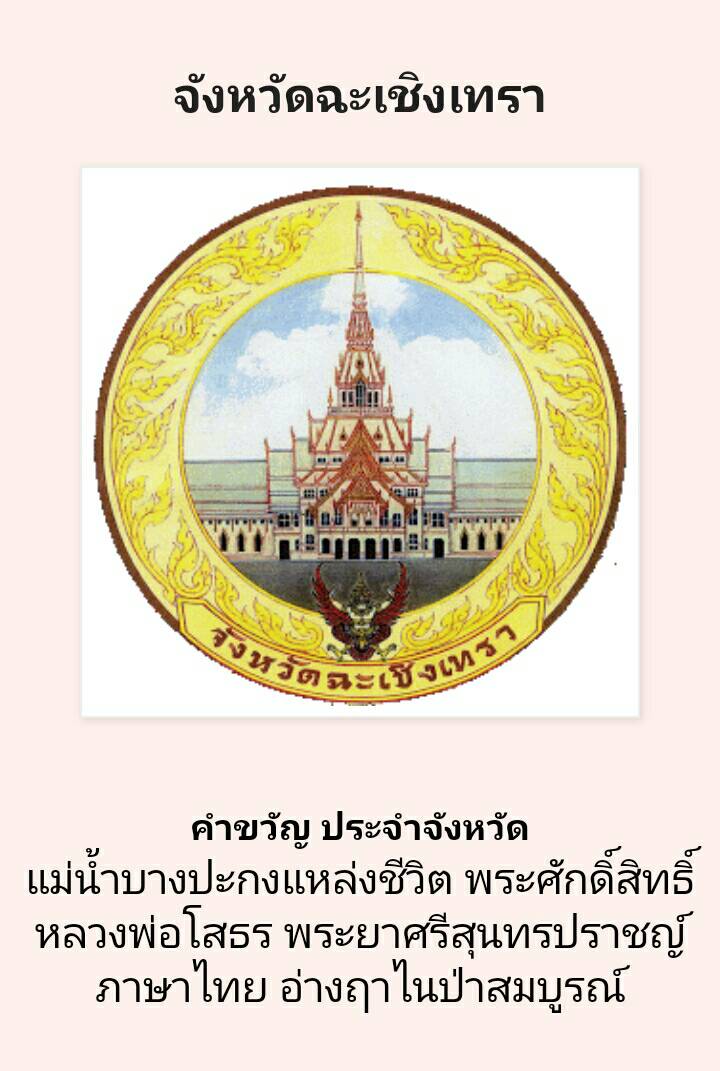
- One of the primary schools in Chachoengsao Town Municipality has been named after Phraya Srisundaravohara (Noi Achâryânkura) (literal translation): Thetsabaan 2 Phraya Srisundaravohara (Noi Achâryânkura) School

- One of the bridge crossing-over Bang Pakong River located in Ban Pho district, Chachoengsao has been named after Phraya Srisundaravohara (Noi Achâryânkura) (literal translation):Phraya Srisundaravohara (Noi Achâryânkura) Bridge
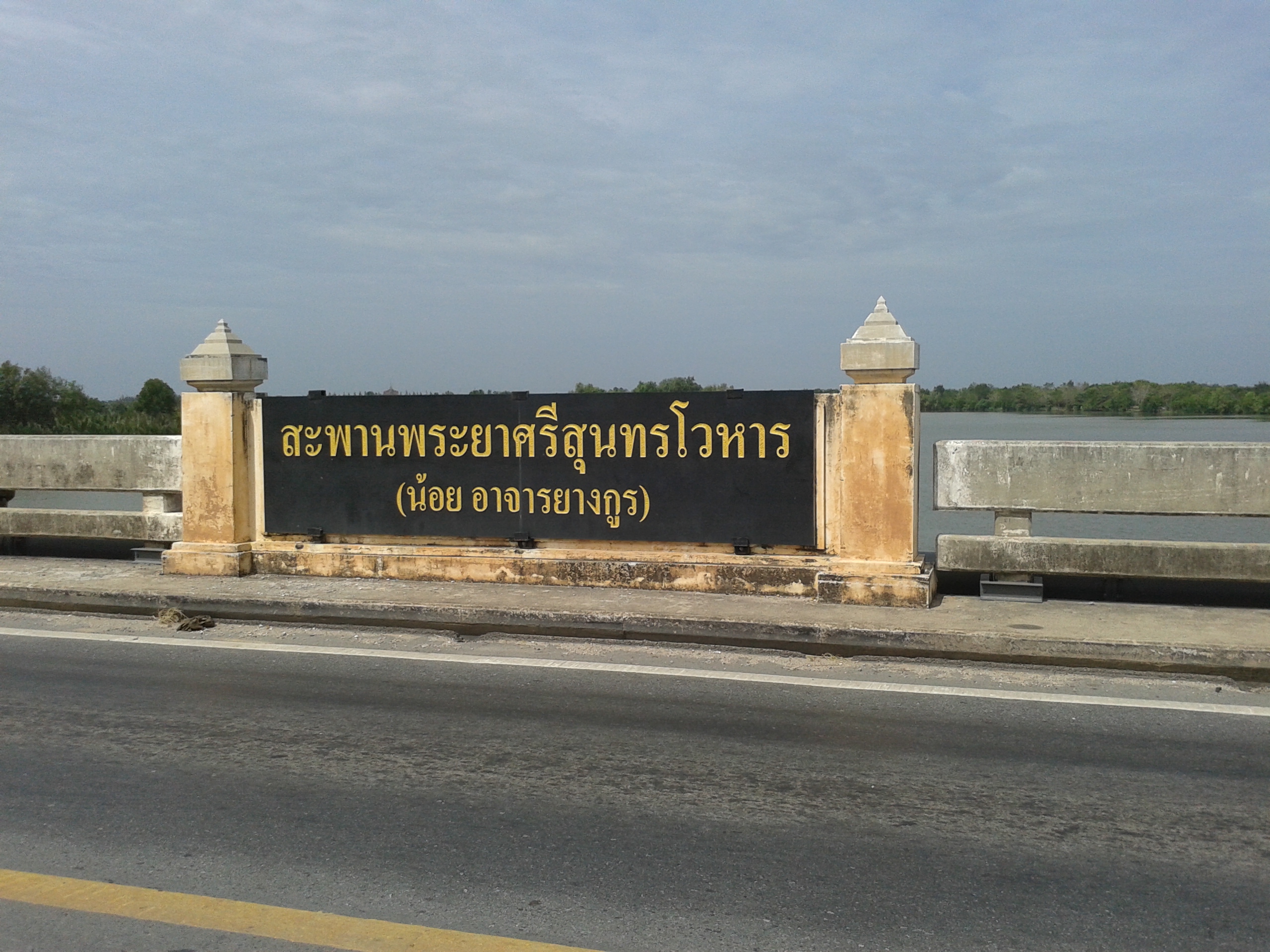
- One of the roads in Chachoengsao Town Municipality was named after Phraya Srisundaravohara (Noi Achâryânkura) but the translation was done with local pronunciation (literal local translation): Thanon Phraya Sisunthon
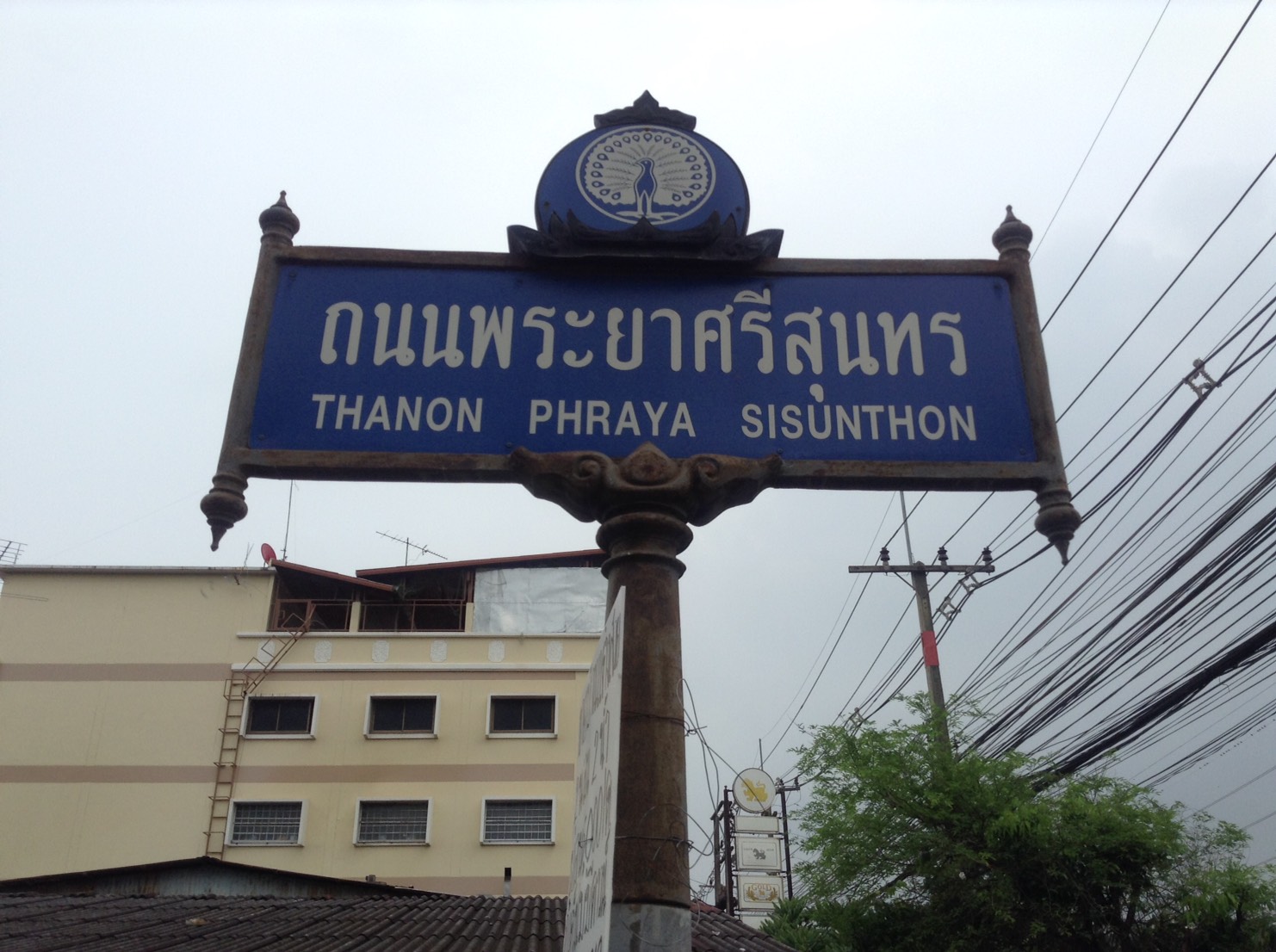
- Phraya Srisundaravohara (Noi Achâryânkura) Hall of Honour was located on the 2nd floor of the guesthouse inside Chachoengsao provincial museum which used to be the governor’s resident. Inside the hall of fame, there is a bust statue of Phraya Srisundaravohara with a pen and a notebook to represent his status as a scholar. There are also pictures and exhibitions to illustrate his biography, works, and achievements which contributed greatly to Thai society and the later generations.

- At Chachoengsao province’s town hall, one of the meeting rooms has been named after Phraya Srisundaravohara (Noi Achâryânkura) as well. The Room is called Phraya Srisundaravohara (Noi Achâryânkura), located on the 1st floor of the town hall.

- In addition, another statue of Phraya Srisundaravohara (Noi Achâryânkura) was built in order to honor the National Teacher’s Day and was placed at the auditorium of Thailand’s Teacher Council. The construction of this statue began on June, 8th 1999. The statue was made of metal, with the height of 2.65 meter.

Source: Thailand’s Teacher Council, Ministry of Education
- Translation of the desciption plate: Phraya Srisundaravohara (Noi Achâryânkura) the author of the first series of 6 Thai textbooks: 1) “Mool Bot Ban Pa Kij”, 2) “Waha Niti Nikorn”, 3) “Aksorn Prayoke”, 4) “Sangyohk Pithan”, 5) “Waipoj Phijarn”, and 6) “Phisarn Karan”
- Translation of the engraving at the base of the statue: Phraya Srisundaravohara (Noi Achâryânkura) was appointed as Head of the Royal Printing House and later as King Rama V’s privy councilllor. He was born on 5th July 1822 and passed away on 16th October 1891, at the age of 69.
- One of the meeting rooms at Thailand’s Teacher Council, Ministry of Education, has been named after Phraya Srisundaravohara (Noi Achâryânkura), called Room Srisundaravohara, located on the 3rd floor.
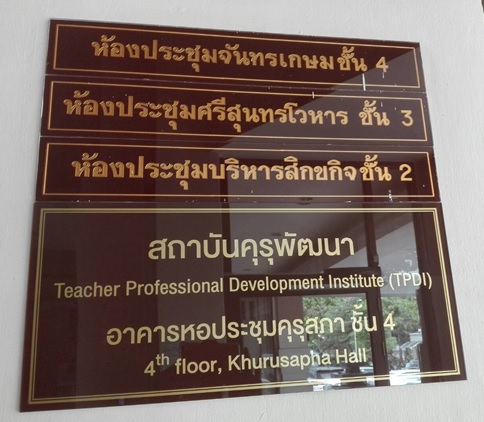
Source: Thailand’s Teacher Council, Ministry of Education
Remarks: Phraya Srisundaravohara’s 200-year anniversary will be on 5th July 2022.
